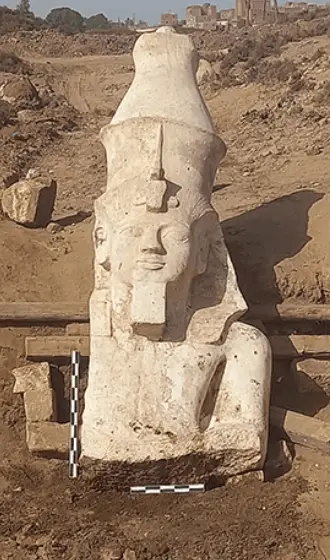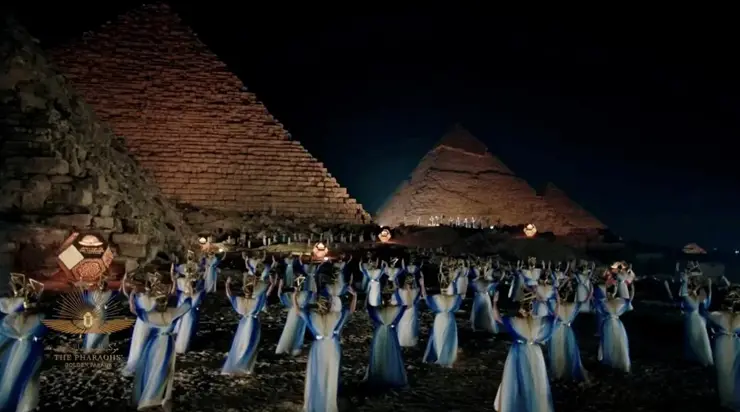An international team of archaeologists working in Minya uncovered the top portion of a colossal statue depicting the renowned pharaoh Ramses II.
The Egyptian Ministry of Tourism and Antiquities confirmed this discovery, noting that the upper section of the statue was found during excavations in the ancient city of Hermopolis, located near the present-day city of Al-Ashmunin in Minya. Hemenu, as Hermopolis was known during the Old Kingdom, served as a significant population center in the province, second only to Thebes.
Dr. Mustafa Waziri, the Secretary General of the Supreme Council of Antiquities, stated that the recently unearthed limestone fragment is the “missing upper part” of Ramses II’s statue, originally discovered in the 1930s by the German archaeologist G. Raeder.
Dr. Bassem Jihad, the leader of the Egyptian division of the archaeological team, has provided further details regarding this particular section of the statue. He has confirmed that it stands at an impressive height of approximately 3.8 meters and portrays Ramses II adorned with a double crown featuring a king cobra.
Furthermore, atop the back column, there are numerous hieroglyphic inscriptions that outline the pharaoh’s prestigious titles and accomplishments.
Taking into account the previously discovered lower portion, it is estimated by the Egyptian ministry that the complete sculpture could potentially reach a towering height of around 7 meters.

Who is Ramses II the Great
Ramses II, also known as Ramses the Great, reigned from 1314-1224 BC and held the title of pharaoh for a remarkable 66 years. He commanded immense authority and respect among the population.
Throughout his rule, Ramses II achieved notable conquests, including the regions of Palestine and Lebanon. However, he faced defeat in a battle against the Hittites. In order to establish peace, he solidified a peace agreement by marrying the daughter of Hittite king Hattusili III. Ramses II had a total of 160 children from various women.
Under Ramses II’s pharaohship, Egypt experienced its zenith of power. He dedicated himself to constructing numerous temples and statues, leaving a lasting legacy.
One of the most impressive examples is the Abu Simbel temple complex in the southern part of the country, featuring four colossal statues of Ramses II seated, each measuring 20 meters in height. Additionally, the mummy of Ramses II, discovered in 1881, is currently on display in a glass case at the Egyptian Museum in Cairo.



